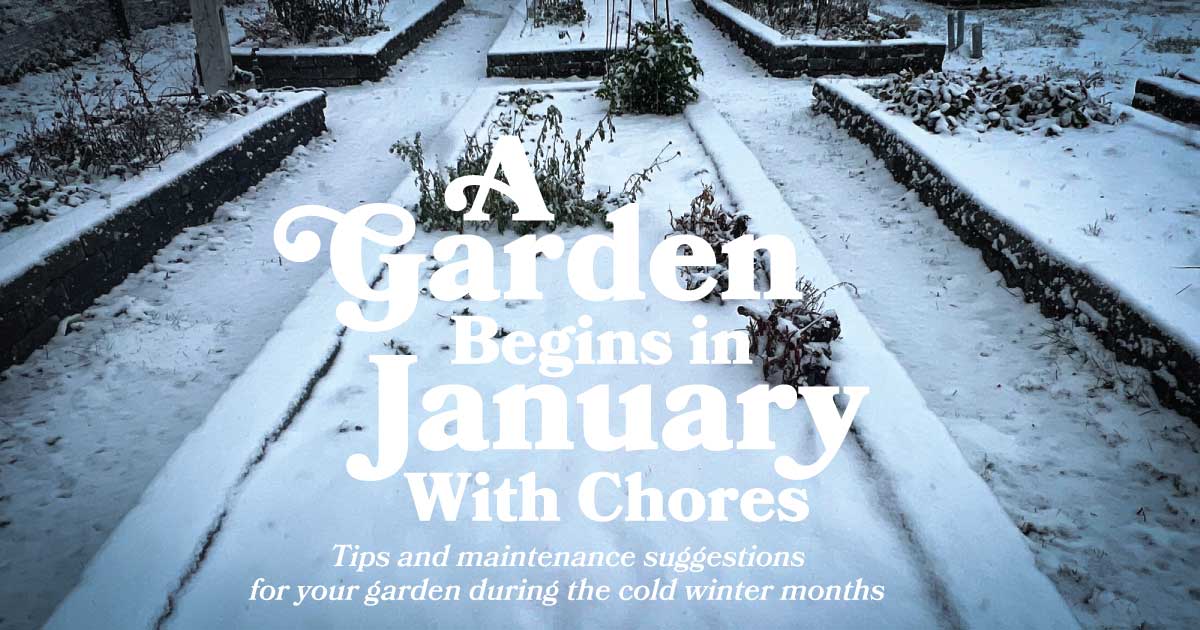
Tips and maintenance suggestions for your garden during the cold winter months
January in the Pacific Northwest can be a tricky time to work in the garden. It’s cold, the ground is frozen, nights are longer and the weather is unpredictable.
But there’s still work to be done! Kick off the new year in your garden with renewed energy and plans for the months ahead. First, take some time to consider your growing strategy as well as any changes to your garden plot. Do you want to add a raised garden bed? Or redo your entire garden design?
Winter is also ideal for taking inventory of your garden seeds to ensure they are viable for planting. Old or improperly stored seeds often have very low germination rates. Generally, if your seeds are more than 3 or 4 years old, it’s probably best to buy new ones.
In the spirit of planning ahead, it’s always a good idea to test your soil and identify what nutrients are missing in order to fertilize accordingly. Consider testing it yourself with a soil test kit or using a specialty lab.
You can get a head start on food and flower production by sowing early crops indoors in January. Early crops include beets, broccoli, cabbage, celery, kale, leeks, lettuce and mustard. In early February, you can likely start sowing summer crops such as eggplant, peppers and tomatoes.
Crops like broccoli, cauliflower and cabbage can be direct seeded into your garden around mid-February, but it’s better to start them indoors around mid-January and then transplant them into the garden at the beginning of March. Do the same with lettuce and spinach.
Do you want to grow tomatoes, peppers and eggplants? Start these indoors in mid-January. Transplant them into the ground around the end of March, or when frost is no longer forecasted.
Seeds for summer vegetables like beans, cowpeas, corn, squashes, pumpkins, cucumbers, watermelons, gourds and sunflowers should be planted directly into the ground near the end of March (or when your soil reaches a temperature of roughly 60 degrees Fahrenheit).
January is also a great time for pruning and tidying as well as other hands-on chores in the garden. Make sure to trim any perennials with dead or diseased branches. You can start pruning dormant fruit trees, shrubs and grapevines as well. Removing dead and dying branches allows room for healthy growth and fruit production. It also improves air circulation and sun penetration.
Additionally, spraying your fruit trees this winter will help to suppress pests and diseases. Dormant oil sprays prevent leaf curl and other fungal diseases by controlling certain aphids, mites, scales, and pear psyllas on fruit trees.
While planning for the next year ahead, think about attending a local flower show! One of the largest flower shows in the country is the Northwest Flower & Garden Show, which is held each year in Seattle. Flower shows enable gardeners to compare their talents and learn new techniques.
In Issaquah Highlands, community garden patches are available to rent by the season in three separate locations: Vista Gardens, Sunset Walk Gardens and Westridge Garden. Join the Issaquah Highlands Community Garden on Facebook to meet fellow gardeners and learn more.
Ben Armlin is a Huckleberry Circle resident.





